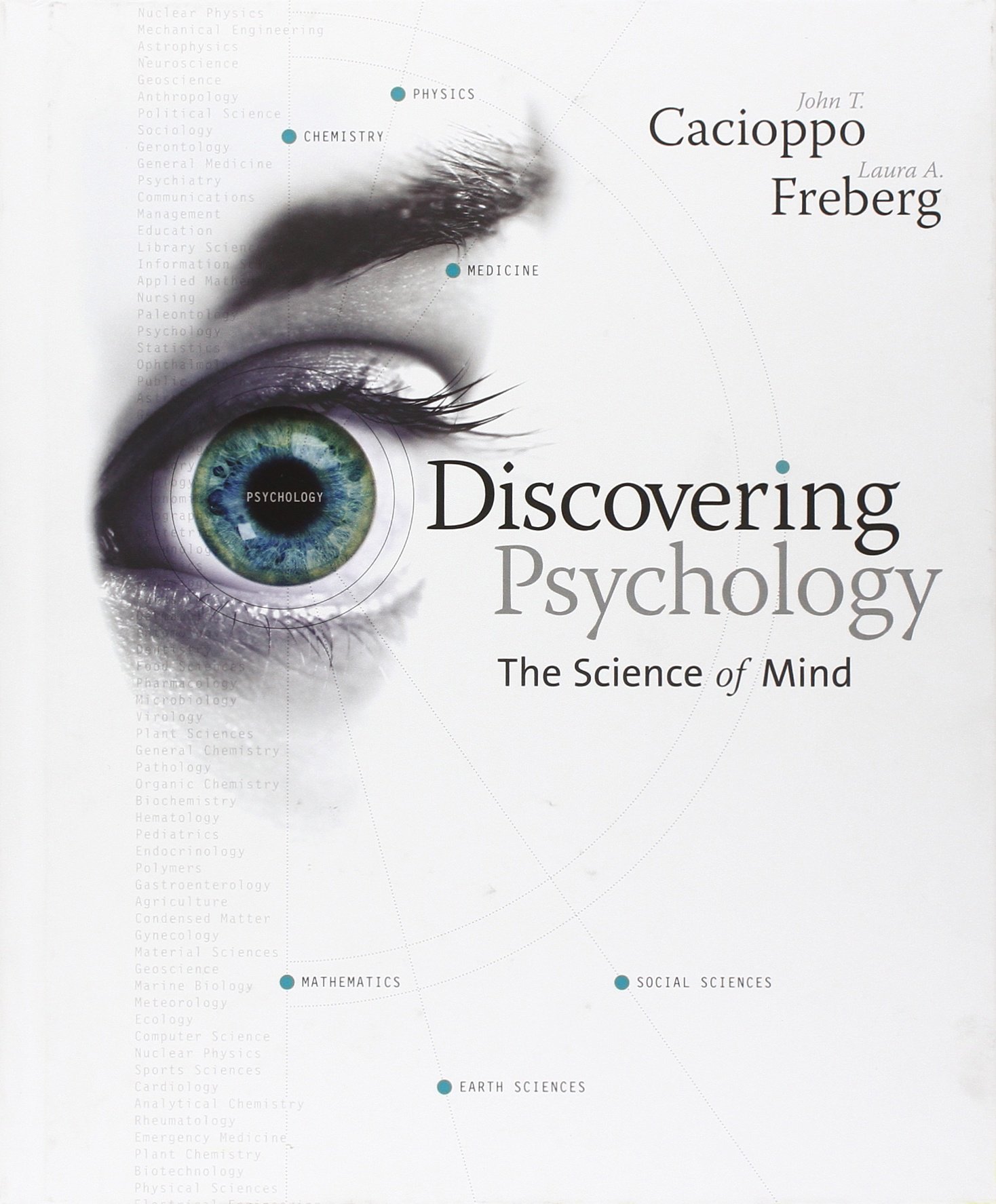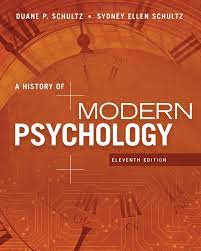Test bank For Discovering Psychology the Science of Mind 1st Edition by Cacioppo Freberg
Original price was: $55.00.$25.00Current price is: $25.00.
Digital item No Waiting Time Instant Download
ISBN-10: 061818550X ISBN-13: 978-0618185504
Authors: John T. Cacioppo, Laura Freberg
Publisher: Cengage Learning; 1st edition
Description
Test bank For Discovering Psychology the Science of Mind 1st Edition by Cacioppo Freberg
Chapter One: The Science of Mind –
The Discipline of Psychology
Learning Objective
Related Questions
Multiple
Choice
Essay
- 1. Explain the subject matter that psychologists study, addressing the meaning of mind and psychology’s role as a hub science.
1-11
- 2. Analyze the respective contributions of philosophy and the physical sciences as the “roots” of modern psychology.
12-39
1
- 3. Compare and contrast the early movements in psychology – structuralism, Gestalt psychology, functionalism, behaviorism, psychodynamic theory, and humanism – in terms of leading figures, core principles, and contribution to modern psychology.
40-87
2
- 4. Differentiate the seven major perspectives of modern mainstream psychology in terms of typical research questions, research methods, and focal causes of behavior.
88-106
3
- 5. Analyze the ways in which the seven major perspectives can be integrated to address a single psychological problem or topic.
107-112
- 6. Explain why psychology’s role as a “hub science” allows psychologists to pursue a wide range of career paths in terms of professional specialties and research areas.
113-121
Chapter One: The Science of Mind – The Discipline of Psychology
MULTIPLE CHOICE
1.Which of the following best describes the mind?
|
a. |
The basis of rational thought |
c. |
The embodiment of the soul |
|
b. |
The hidden instinctual self |
d. |
The brain and its activities |
ANS: D PTS: 1 DIF: Remember REF: What Is Psychology?
OBJ: LO1
2.The scientific study of behavior and mental processes is called ____.
|
a. |
introspection |
c. |
behaviorism |
|
b. |
psychology |
d. |
functionalism |
ANS: B PTS: 1 DIF: Remember REF: What Is Psychology?
OBJ: LO1
3.The word psychology is a combination of two Greek words: psyche (or psuche), meaning the soul, and logos, meaning the ____.
|
a. |
law of |
c. |
study of |
|
b. |
expression of |
d. |
representation of |
ANS: C PTS: 1 DIF: Remember REF: What Is Psychology?
OBJ: LO1
4.Rosa, a doctoral student in psychology, observes that one of her young study participants grimaces after taking a bite of broccoli. His facial expression is an example of ____.
|
a. |
a psychosomatic response |
c. |
an integrated mental process |
|
b. |
a behavior |
d. |
introspection |
ANS: B PTS: 1 DIF: Apply REF: What Is Psychology?
OBJ: LO1
5.Although the bulk of psychology focuses on human behavior, studying animal behavior has been an essential part of the discipline that allows for ____.
|
a. |
making essential comparisons with humans |
|
b. |
understanding animal-human interactions |
|
c. |
understanding behavior from an evolutionary standpoint |
|
d. |
designing better psychoanalytical therapies |
ANS: A PTS: 1 DIF: Remember REF: What Is Psychology?
OBJ: LO1
6.A doctor notices that many soldiers returning from fighting in the trenches in World War I were highly anxious, fearful of loud noises, and having difficulty reconnecting with their families. He asks them to record personal observations of their own thoughts, feelings, and behaviors in a journal. This process is called ____.
|
a. |
extroversion |
c. |
objectivism |
|
b. |
transference |
d. |
introspection |
ANS: D PTS: 1 DIF: Apply REF: What Is Psychology?
OBJ: LO1
7.It is difficult for others to confirm an individual’s subjective introspections; therefore, this approach does not lend itself well to ____.
|
a. |
psychoanalysis |
c. |
case studies |
|
b. |
the scientific method |
d. |
cognitive therapy |
ANS: B PTS: 1 DIF: Understand REF: What Is Psychology?
OBJ: LO1
8.Over the last 30 years, new methods have allowed psychologists to observe brain activity and revisit questions of mental processes. What element have these methods introduced to psychological research?
|
a. |
objectivity |
c. |
generalizability |
|
b. |
subjectivity |
d. |
conclusiveness |
ANS: A PTS: 1 DIF: Analyze REF: What Is Psychology?
OBJ: LO1
9.Kevin Boyack and his colleagues generated a map of the sciences, similar to a map of friendship networks on social media, by using ____.
|
a. |
the number of doctoral dissertations in each field |
|
b. |
the titles of journal articles |
|
c. |
reference lists in journal articles |
|
d. |
search terms related to psychology |
ANS: C PTS: 1 DIF: Understand REF: What Is Psychology?
OBJ: LO1
10.The mapping done by Boyack and colleagues shows that psychology is one of the major hub sciences, with strong connections to ____.
|
a. |
the medical sciences, the social sciences, and education |
|
b. |
the humanities, education, and the medical sciences |
|
c. |
the social sciences, the medical sciences, and the humanities |
|
d. |
the medical sciences, education, and philosophy |
ANS: A PTS: 1 DIF: Understand REF: What Is Psychology?
OBJ: LO1





Be the first to review “Test bank For Discovering Psychology the Science of Mind 1st Edition by Cacioppo Freberg”